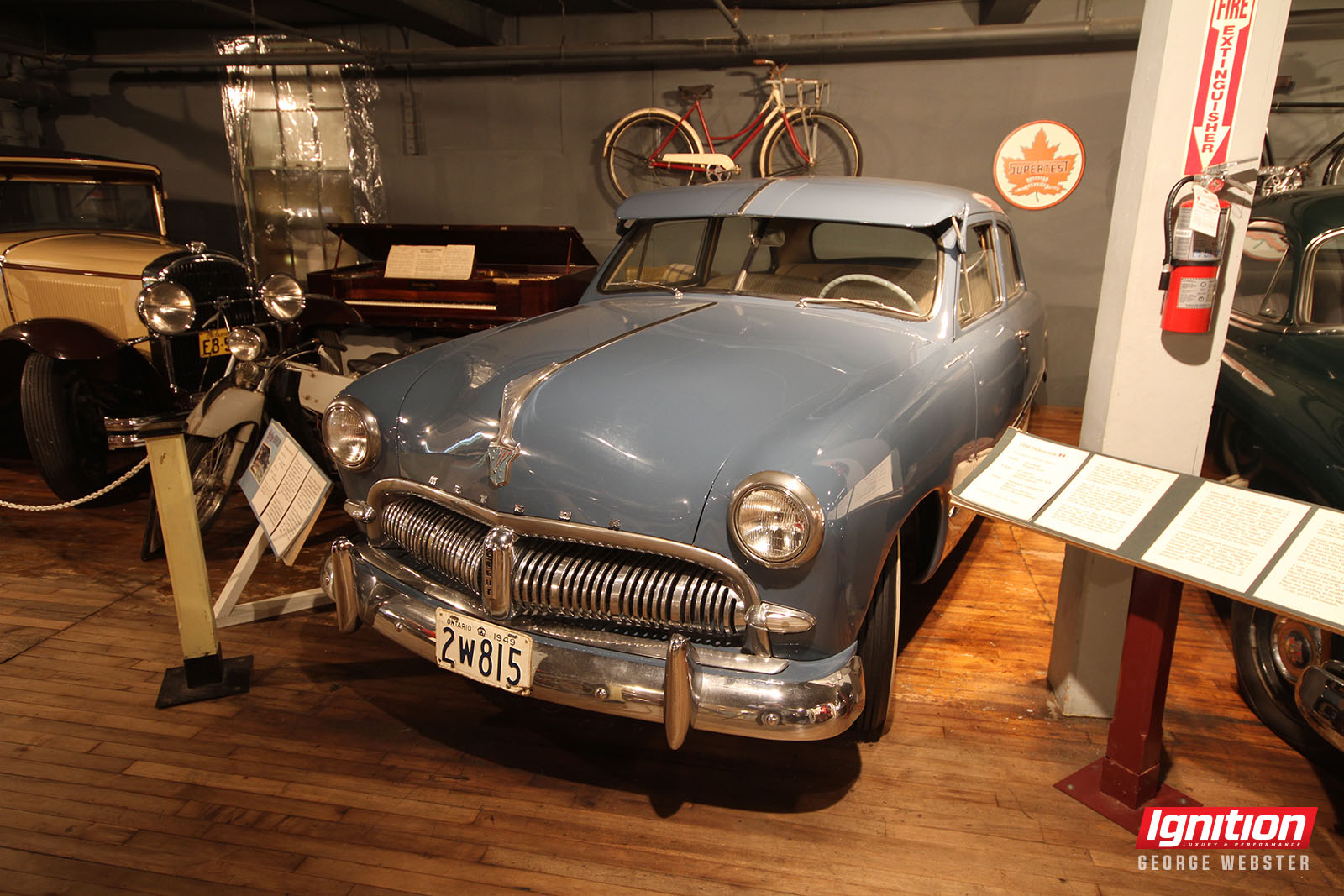
1949 Meteor (NOT "Mercury Meteor")
Anyone who thinks they are a “car guy” owes it to themselves to visit the Canadian Automotive Museum in Oshawa – and to take their kids as well. Google only lists three car museums in Canada, and the other two are in Manitoba and Alberta. So, despite the Oshawa museum being a bit of a “diamond in the rough,” it is the only game in town for people in Eastern Canada.
Here’s how the museum bills itself: “Since 1963 the Canadian Automotive Museum has been Canada’s only museum dedicated to preserving and sharing the history of Canada’s automotive industry. The Canadian Automotive Museum is home to the most significant collection of Canadian cars in the world, as well as a world-class collection of internationally-made automobiles, trucks and motorcycles. Visit the museum to learn about the history and evolution of the automotive industry from the 19th century to the present.”
Despite this glowing description, many first-time visitors may be a bit taken aback by some of the museum’s obvious deficiencies. The building is too small for the size of its collection resulting in the cars being crowded into the space available, making them a bit hard to see well. I didn’t take a proper guided tour, but for someone wandering through the collection on their own, the information panels provided are a bit sketchy. There’s no air conditioning either, so pick your date to visit appropriately.
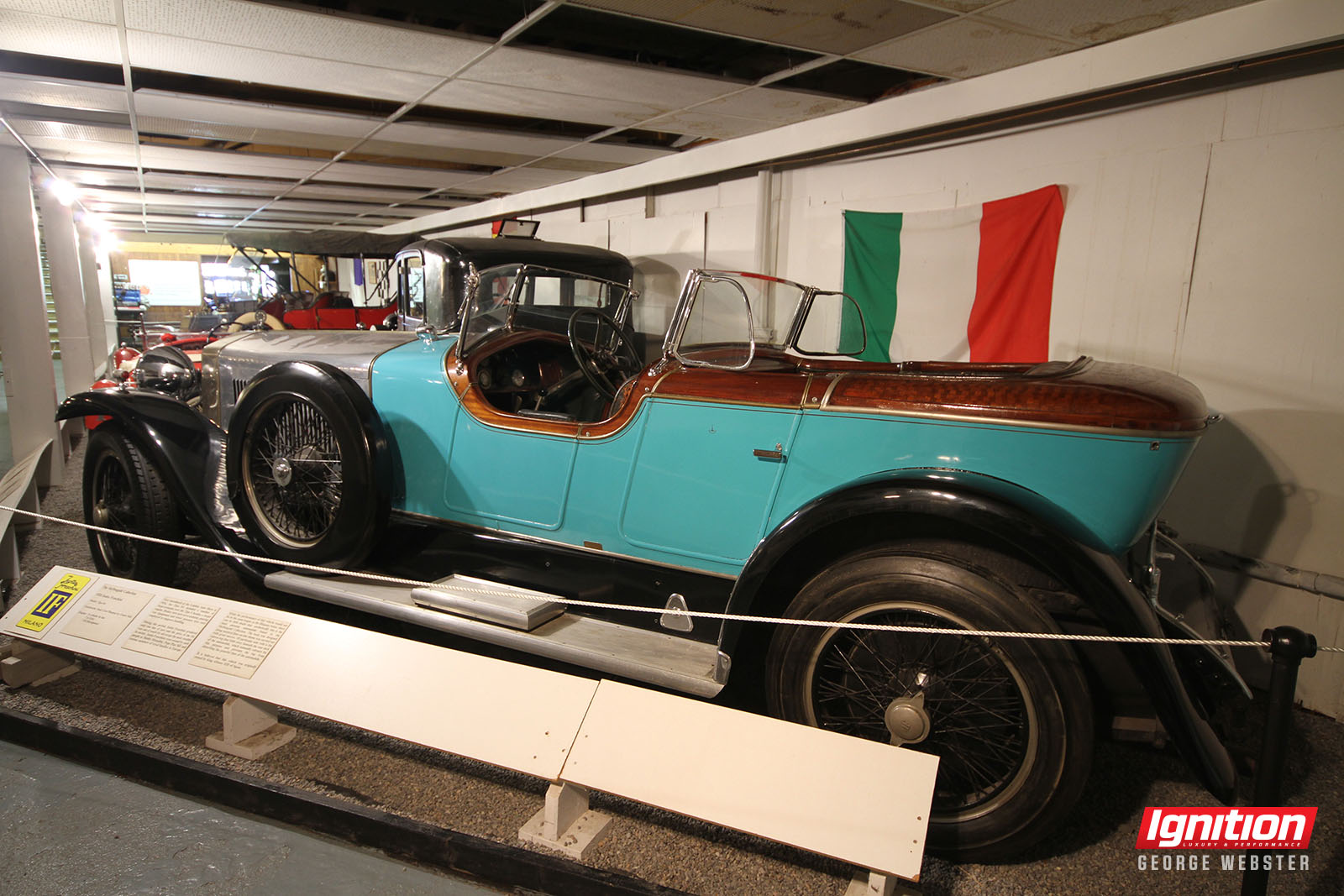
1926 Isotta Fraschini Tipo 8A Dual Cowl Phaeton
It may be my taste only, but I wished the cars were presented in something a bit closer to “concours” standards. In general, the cars are in an unrestored state and in need of a good shine. Fortunately, most of the cars were in good condition when they were donated. Upstairs the lighting is a bit dim, adding to the “barn find” feel of that part of the museum.
Taking the good with the bad, 27 of the best cars in the collection have come from two important Canadian collections, the Craven (cigarettes) collection and Bud McDougald’s collection.
To properly appreciate this collection, you have to slow down and read the information panels and look carefully at the cars on display and ask yourself, ‘Why is this car in the collection?’ Some are there because they help tell the story of the automotive industry in Canada, others are there because they represent some of the finest and most valuable cars in the world. Examples of many of the more exotic cars in this collection have sold for big money – some as much a few million dollars. The visitor who takes the time to think about all the cars and their significance will be well rewarded.
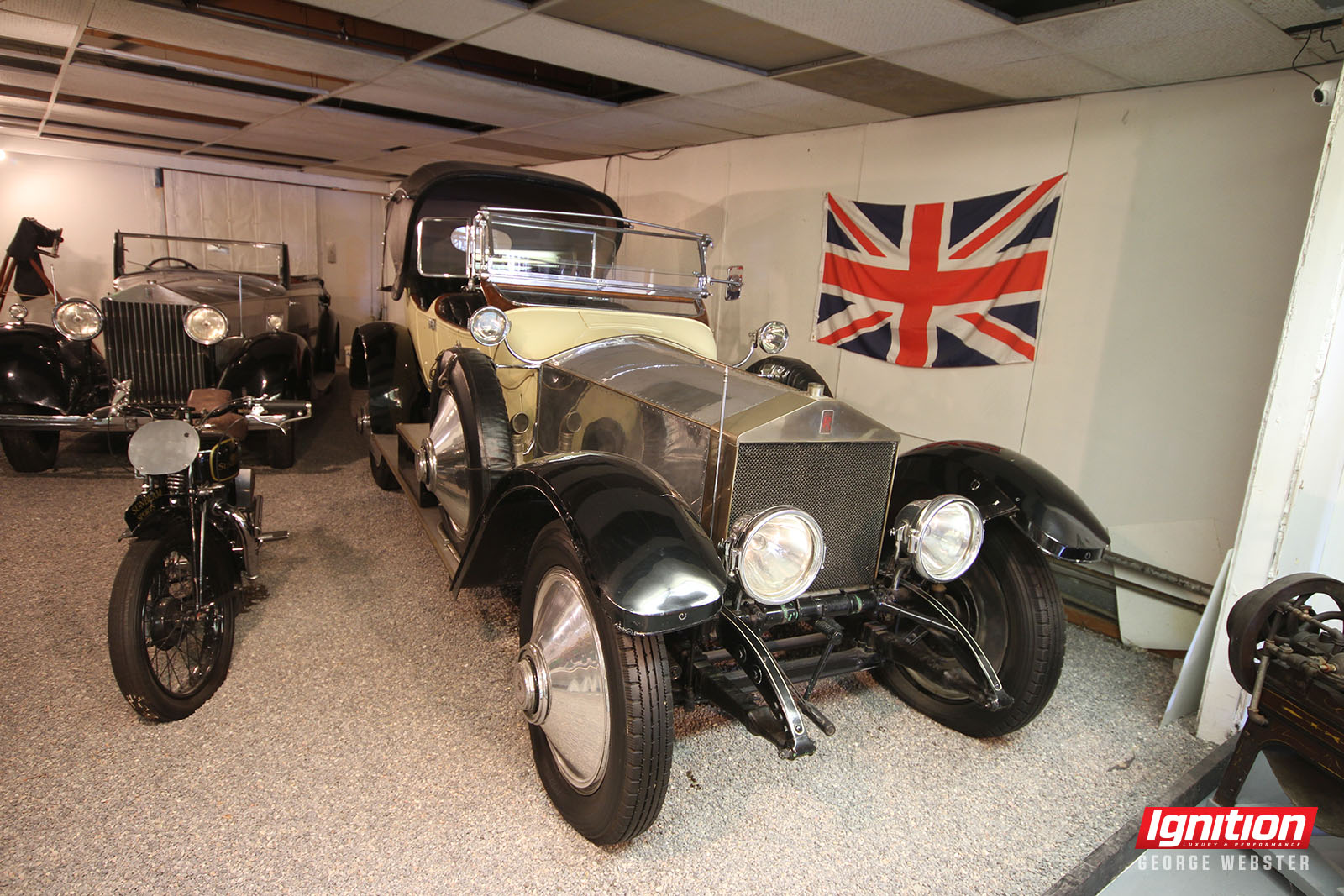
1914 Rolls-Royce Silver Ghost 5 Passenger Touring
There are descriptive cards on most of the cars but they are, of necessity, a bit limited. The museum does have Wi-Fi, so in this modern age you might be well-advised to bring your web device along so you can Google the cars that catch your interest and get more information.
There are seven Rolls Royces in the collection. The most significant is the 1912 Silver Ghost “Ladybird,” which was originally Lady Eaton’s car. Almost hidden out toward the back is a 1923 Vauxhall 30-98, a renowned true “vintage” sports car. There is an amazing 1931 Alfa Romeo 1750 Zagato – it’s no wonder other examples of this car have sold for millions. Alongside the Alfa we see a 1928 Hispano-Suiza H6B and a 1926 Isotta Fraschini 8A, another two classic vintage sports cars. Some like the fact that the 1926 Bugatti Type 37, which was shown at the auto show in Toronto last winter, is in unrestored shape but, if I could, I would opt for a proper restoration of this classic vintage sports car. Then it would become the star of the collection.
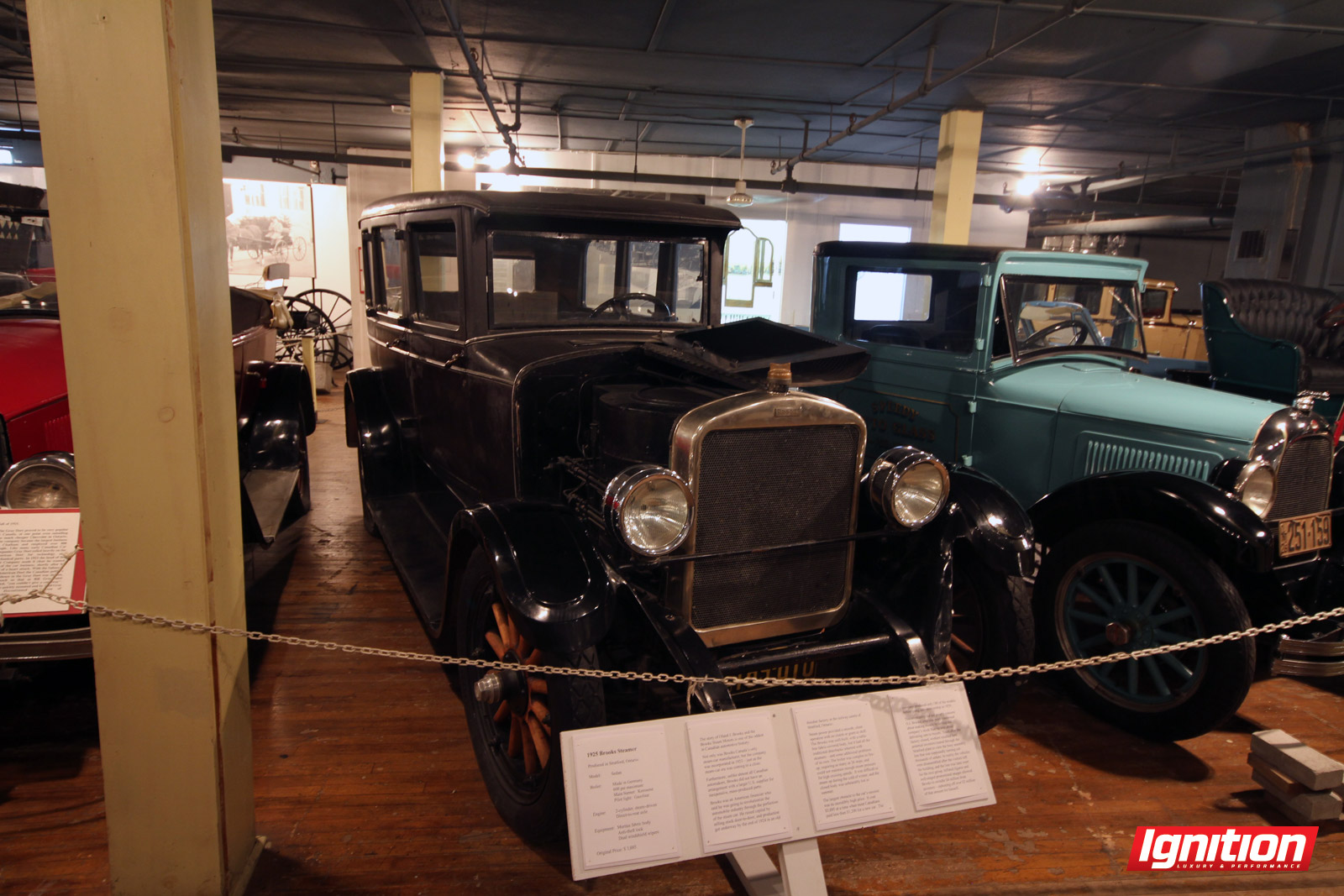 |
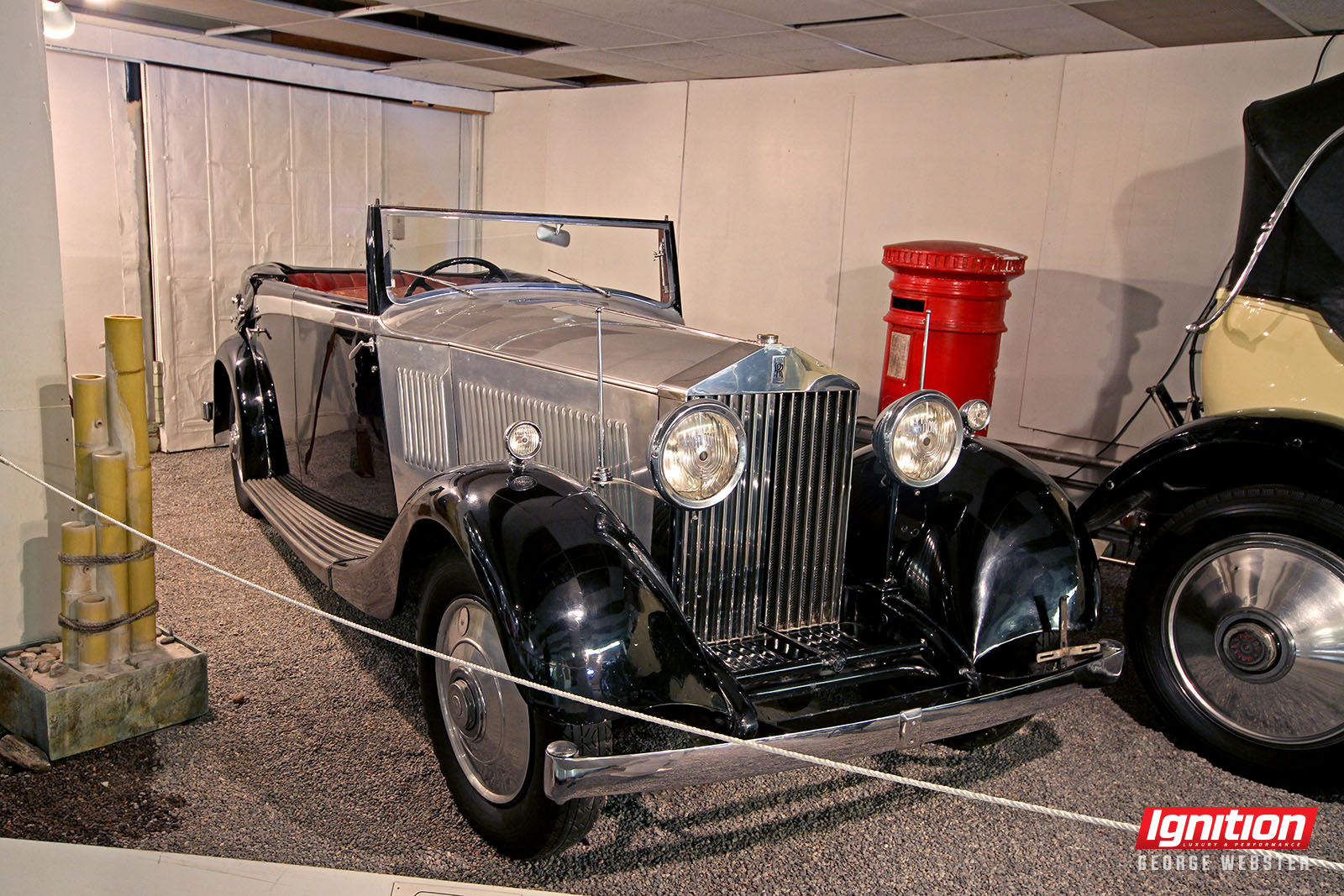 |
| 1925 Brooks Steamer | 1935 Rolls-Royce 20/25 |
Alex Gates, the museum’s curator, told me that the Rolls Royces and the Alfa Romeo are among the most popular exhibits – along with the familiar Big Three brands, especially the post war examples like the Corvair and the Plymouth Aries KCar. Another popular exhibit is a modern rarity, the 1965 Amphicar. This is an amphibious car, designed to be driven on the road or in the water. It was donated new to the museum and has never been in the water. And, of course, everyone recognizes and loves the 1983 DeLorean sports car from its starring role in the Back to the Future movies.
We all know the old Model T Ford, but it is interesting to see the competitive Chevrolet 490 –and a 490 converted to a half-track snowmobile – alongside upstairs. There are three cars that make for an interesting conversation about alternative power – a 1923 Rauch & Lang Electric (a relative of the better-known Baker Electric), the 1925 Brooks Steamer and the 1914 Galt (a gasoline-electric hybrid). All three represent earlier attempts that lost out to the more conventional gasoline-powered cars.
 |
 |
| Chevrolet 490 "snowmobile" | 1921 Kissel "Gold Bug" |
But don’t stop there. Take a look at every car on display and try to put it into context in the 20th Century history of the automobile. Kids under five are free, and tickets range from $5 to $8, depending on your age.
All in all, this museum is well worth a visit and, while you are there, check out the other downtown area attractions, including the interesting selection of restaurants.\
Follow this link to learn more about the museum.

1950 Oldsmobile Futuramic + 1957 Dodge Regent
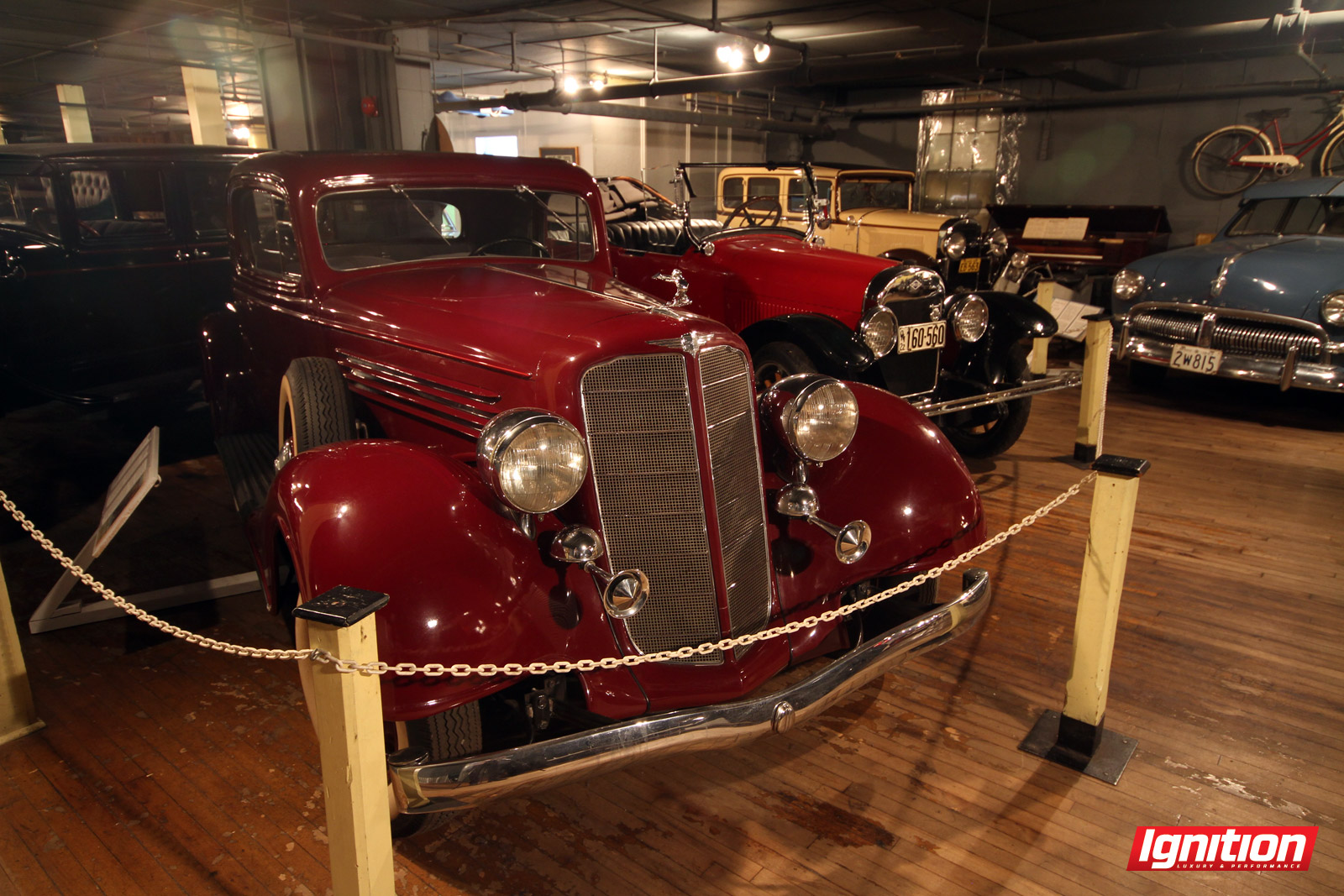 |
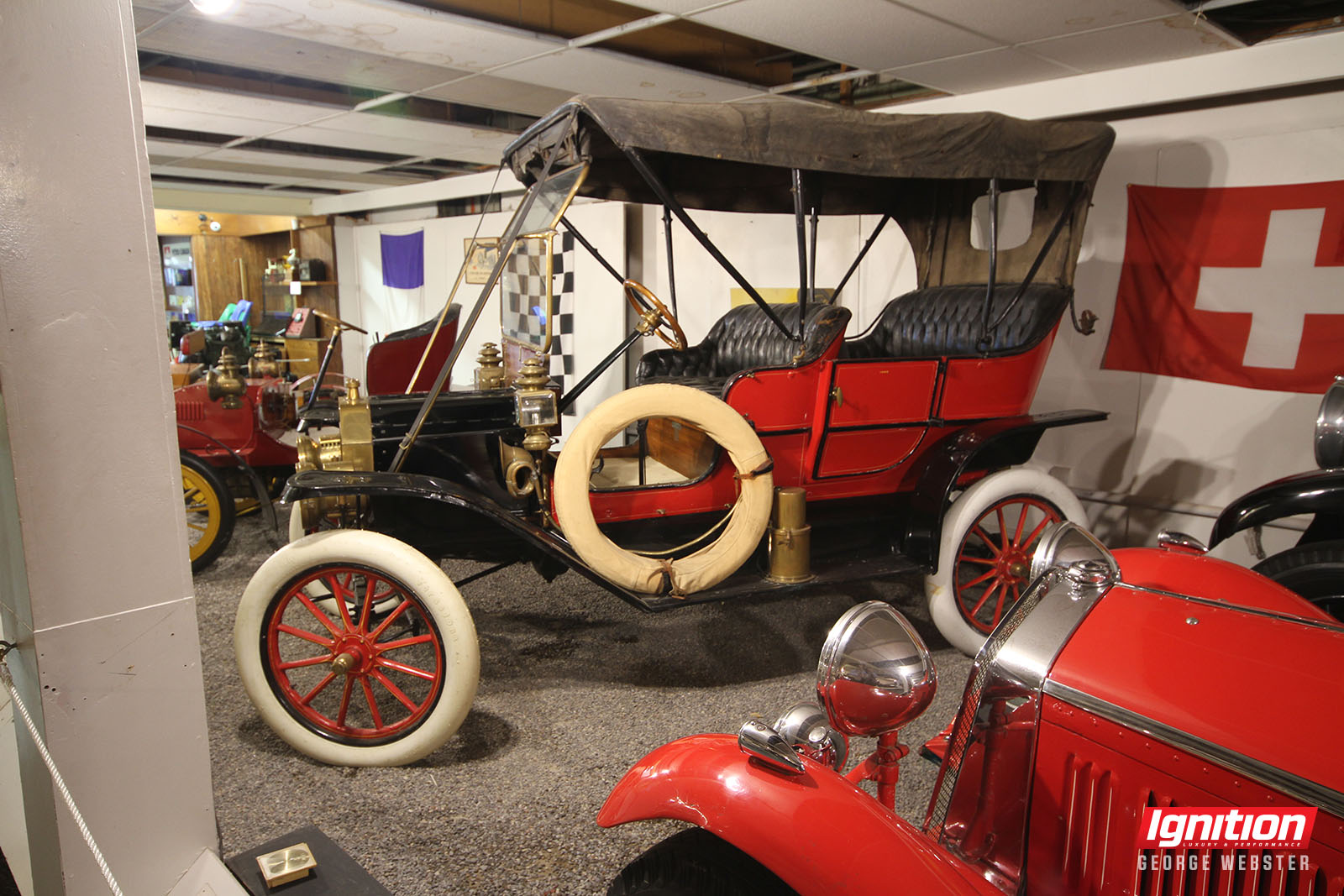 |
| 1934 McLaughlin | Buick 1909 Ford Model T |
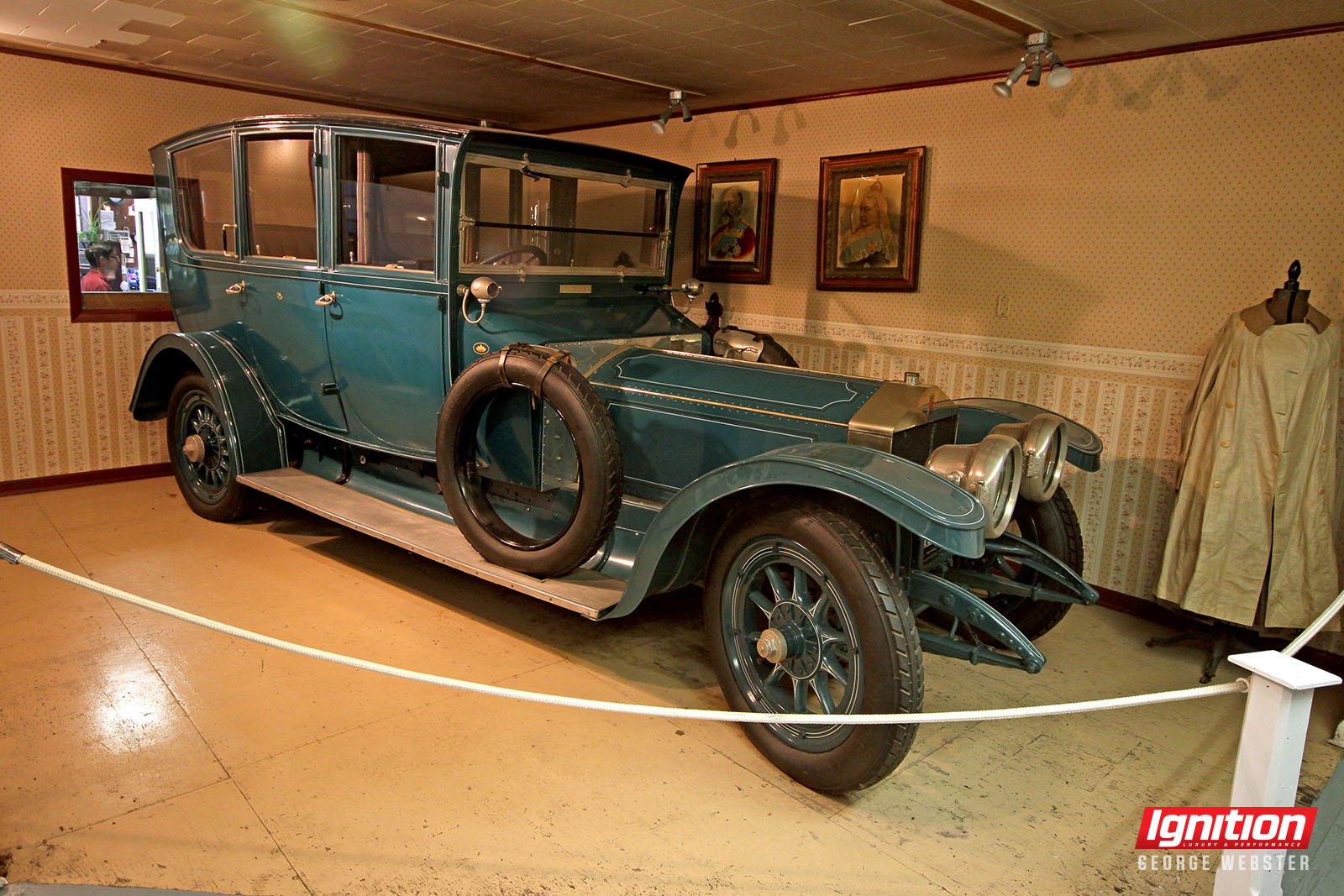
1912 Rolls Royce Silver Ghost






















